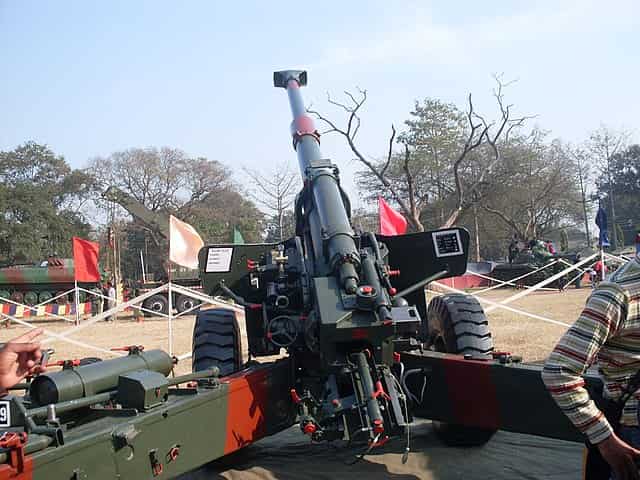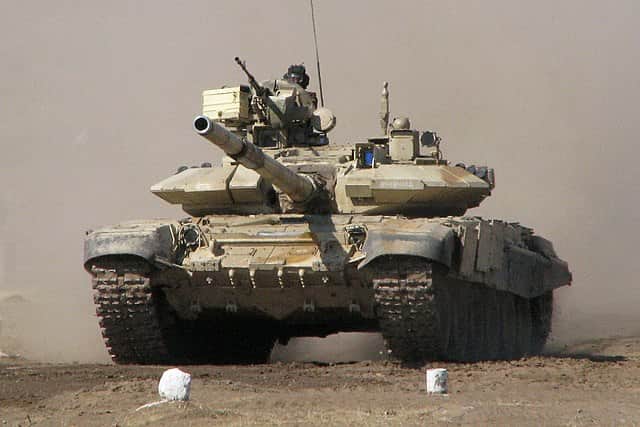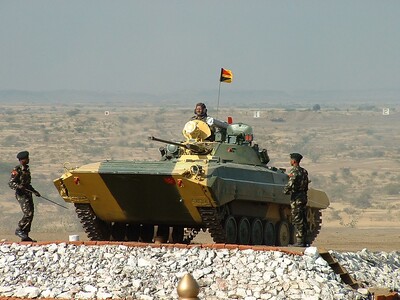After years of consideration and debates the Indian Government recently finalized the plan to modernize the Armed Forces and bolster their capabilities as required with changing times. Around $130 billion are to be invested for the same in next 5 to 7 years.
The framework is broad and includes many aspects of modernization and restructuring the forces. After decades the Armed forces are set to see major acquisition of a wide variety of weaponry from missiles, warships, drones, fighter aircrafts to surveillance equipment’s and Artificial Intelligence.
The fact that the existing territorial disputes are ‘land-centric’ highlights the pre-dominant role of the Army in the Indian security context. Army needs modern weapon systems, supported by technology based processes and automation. The old inventory needs to be replaced or upgraded .Further the plan seeks to enhance and modify the integration of tri services. Creation of CDS was a step in that direction.
The Indian Army is already underway to restructure and optimize its manpower. The idea has been to make greater finances available for procurement by optimizing and efficient use of resources. The avoidable expenses for example with Army Dairy Farms have been done away with.
The plan is also to have a young, smarter and skilled fighting force. It also involve making long awaited modifications in command and control structure of the Armed forces. A separate vigilance cell under the Chief of Army Staff with tri-services representation has been established
Another Human rights cell is being setup under Vice-Chief of Army Staff for enhanced focus on human rights issues
In Army Headquarters about 300 Officers are being redeployed for better coordination of these efforts. The Mountain Strike Corps has been made leaner.
A new profile of Deputy Chief of Army Staff (Strategy) is being established. A new branch has been established to deal with Information Warfare to be operated under a DG who will report to Deputy Chief of Army Staff (Strategy).
The concept of Integrated Battle Groups has been materialized and are being tested in formations on western and Eastern Borders
The reforms further aim to cut down overall strength by about 150,000 personnel in next 7 years
INFANTRY
Despite problems, huge efforts are being made here. Infantry needs new generation lightweight assault rifles, bullet proof jackets and helmets, hand held thermal imagers (HHTIs, machine guns, rocket launchers, anti-tank guided missiles (ATGMs), night vision devices
Soldiers intake needs to be reviewed as modern-day soldier needs to be technology savvy and have multiple skills. The infantry soldier must have encrypted communication, hand-held device for situational awareness – team location and GPS
Efforts are on to acquire a modern rifles, Machine Guns and Carbines. In October 2017, the Army began the process to acquire around 700,000 rifles, 44,000 Light Machine Guns (LMGs) and nearly 45000 Carbines
Ministry of Defence signed over Rs 700 crore contract with Sig Sauer, a US company for procurement of 72,400 assault rifles. The Sig Sauer SIG716 7.62×51 mm assault rifles will replace the Indian-made 5.56x45mm Insas rifles. Army would receive 66,400 units, while Navy and Air Force will get 2000 and 4000 units respectively
The first batch of 10,000 SIG 716 Assault Rifles was received in December 2019 and has been sent to Northern Command. Indian Army has started inducting its newly acquired American SiG Sauer assault rifles in operations.
The Indian Army will also receive more than 7 lakh AK-203 Kalashnikov assault rifles which are going to be produced in the joint venture between India and Russia. A Joint Venture between Ordnance Factory Board and Russia has been worked out at OF Amethi supposed to provide over 600,000 rifles to Army
Around 18600 light weight Bullet Proof Jackets made by Ordnance Factory Board are to be acquired
ARMOURED CORPS AND MECHANISED INFANTRY
These components also need a much required boost and there is a need to procure a light tank for our mechanised forces. DRDO is developing a prototype based on the Sarath chassis and the BAE system Combat Vehicle 90 as also under consideration
BMP–2 is a second-generation, amphibious infantry fighting vehicle introduced in the 1980s in the Soviet Union, following on from the BMP-1 of the 1960. Process in underway to upgrade 1,600 BMP-2 with a 350 Horse Power (HP) engine. The Army currently has 700 BMP-1s in service. It has excellent mobility and is equipped with a 30 mm Cannon and fires the Konkurs missile which has a range of 4 Km. Further it has two thermobaric missiles with a range of 6 Km
BMP–2
Army is in the process of upgrading about 1600 T-72 tanks with night vision devices and the rest would comprise indigenous Arjun tank. The Arjun Mk II is undergoing trials with about 75 modifications.
By 2020, India would have around 40 Armoured Regiments with total of 2,011 T-90 tanks and six additional regiments are being raised for High Altitude warfare
Better access to Ladakh via roads has seen deployment of T-72 tanks and the BMP-2.
The much needed Future Infantry Combat Vehicle project has not yet materialised which remains a concern. Named Abhay , the Infantry Combat Vehicle (ICV) is being developed by the Defence Research and Development Organisation’s Ahmednagar-based Vehicles Research & Development Establishment (VRDE). Abhay is being developed as a technology demonstrator for replacing Indian Army BMP-2s. At present, various systems of this vehicle are in advanced stages of development
Induction of FICV and Arjun Mk II is scheduled for 2026-27 .Around 2,600 FICVs — with a life span of 32 years, are expected to replace Army’s old BMP-2 vehicles by 2027
ARTILLERY
Good progress has been made with 2019 seeing the induction of 155 mm Dhanush, the Ultra-Light Howitzer M-777 and the Self Propelled 155 mm Vajra. Long Range Pinaka missles would possibly be inducted by 2022. The Artillery is further moving on to Precision Guided Munitions and BrahMos may possibly be inducted in about 2 years.
Artillery needs to have more 55 mm guns, precision artillery systems like BrahMos cruise missiles, Smerch and Pinaka rocket systems. Further procurement of M-777 light howitzers must be expedited

NEW AIR DEFENCE COMMAND UNDER INDIAN AIR FORCE (IAF)
With Department of Military Affairs pushing hard , a new air defence command under the Indian Air Force (IAF) may come up at Prayagraj by end of 2020. It is proposed to be set up alongside the Central Command Headquarters of the IAF which controls important air bases including Agra, Gwalior and Bareilly. The air defence command would integrate the air defence assets of the Army, Air Force and Navy and jointly provide air defence cover to the country.
ARMY AIR DEFENCE
Corps of Army Air Defence (AAD), is an aerial combat support arm of the Army. This corps is tasked with defending India’s air space from low flying aerial strikes or attacks by enemy aircrafts and missiles, mainly below 5000 feet, and protecting strategically located military installations. Army AD is undergoing major revamp with acquisition of all types of surface to air missile systems
Army Air Defence is awaiting induction of VShorad Igla S-24 missiles. In 2019, DRDO confirmed successful development trials of the 30-Km range Quick Reaction Surface-to-Air Missile (QRSAM). The missiles are likely to be cleared for production by 2021.
ARMY AVIATION
It has been reported that Army is set to acquire three squadrons of new generation Apache attack helicopters. Further focus also needs to be on indigenous Light Utility Helicopter (LUH) and Light Combat Helicopter (LCH) projects
DIGITISATION OF INDIAN ARMY
Both Army and Govt are keen on poushing the digitizing the Army. But for that to happen, it is important that we are able to identify the correct type of technology and equipment
Army had earlier started digitisation of the service and personal records of its officers. Army has launched a new software “Officers Automated Structured Information System” (Oasis) which has started digitising the records of the Army officers.
In 2015 MOD launched the Digital Army programme and unveiled a series of product to promote digitalization of Indian Army, such as IAF-HAL ePortal- an inter-organization information sharing system (IOIS) between the Indian Air Force and Hindustan Aeronautics Ltd. to facilitate better coordination, transparency, Army Cloud with Central Data Centre, Digi-Locker and ARPAN 3.0 (Army Record Office Process Automation)
India has developed its first integrated defense communication network. DCN is a strategic, highly secure system. It encompasses all Indian territory from Ladakh to North East and even islands. These steps are crucial in the process of transforming Indian Army to network-centric force
The strategic concept of network-centric warfare (NCW) has four main aspects
- A robustly networked force improves information sharing
- Such sharing and collaboration enhances quality of information and shared situational awareness
- This enhancement, in turn, enables further self-synchronization and improve sustainability and speed
- This combination dramatically increases mission effectiveness
Army has been gradually taking steps to go digital. Technology requirements as mentioned in the “Technology Perspective and Capability Roadmap (April 2013)” (released by MOD) are: Battlefield Transparency, Command and Control Architecture, integrated platforms to support Communication, supporting architecture and infrastructure towards achieving network centricity, Smart Radios, Strong encryption mechanisms
A New Generation Network would enables forces to obtain precise target information in real time.
The much required indigenous Battlefield Management System (BMS) was shelved by the Ministry of Defence (MoD) in 2017. BMS was a platform to integrate frontline troops of infantry battalions and armoured corps .A battlefield management system (BMS) is a system meant to integrate information acquisition and processing to enhance command and control of a military unit.
BMS would enable units to have sensors, platforms, weapon systems integrated with individual soldiers, to enable them to use their resources and plan ops at micro level. It would be a command and control system which can provide real time situational awareness. BMS will be integrated with sensors and decision making architecture
It provides integrated Common Operating Picture (COP) of Battlefield, using collaborative planning tools for tactical commanders operating at levels between Battalion HQ down to Section Commanders to make responsive and knowledge based decisions
MODERN TECHNOLOGIES AND UPGRADATION
Apart from the macro human parameters upgrades are to be done to various modern weapons and surveillance equipment’s such as Unmanned Aerial Vehicles (UAVs) , Battle Field Surveillance Radars, Radars, Long Range Reconnaissance and Observation System (LORROS), Thermal Imaging Intensification Observation Equipment (TIIOE), Night vision equipment, Thermal Imaging, night vision binoculars and Ground Sensors. The amount at present held by various infantry units are in adequate and more investment in quantum is needed
SPACE WARFARE
The Defence Space Agency (DSA) is a tri-service agency of the Indian Armed Forces. Headquartered in Bengaluru. The agency is tasked with operating the space-warfare and Satellite Intelligence assets. The DSA draws personnel from all three Armed Forces
The DSA will operate systems to protect Indian interests in outer space and will deal with potential space wars. The agency will have the responsibility of developing a space warfare strategy
The creation of the Defence Space Agency (DSA), the Defence Cyber Agency (DCA), and the Armed Forces Special Operations Division (AFSOD) was approved by Prime Minister Narendra Modi in September 2018. The Defence Imagery Processing and Analysis Centre in Delhi and the Defence Satellite Control Centre in Bhopal were subsumed by the DSA
India conducted an Anti-satellite weapon (ASAT) test in March 2019. The test was aimed at demonstrating India’s anti-satellite capability. The Indian ASAT programme can be traced back to its BMD program, which began in 1999 in response to threats posed by the Ballistic missiles of Pakistan and China
India was working on directed energy ASAT weapons, co-orbital ASAT weapons, lasers and electromagnetic pulse (EMP) based ASAT weapons. The ability to protect space assets from hostile electronic and physical attacks was also being developed
India conducted its first simulated space warfare exercise in 2019, called IndSpaceEx. Supervised under Integrated Defence Staff, the exercise was aimed at obtaining an assessment of threats and creation of joint space warfare doctrine
Defence Space Research Agency (DSRA) is the scientific organisation responsible for developing space-warfare systems and technologies for the Defence Space Agency. The DSRA was approved by the Indian government in June 2019. The DSRA is composed of scientists who undertake research and development in close coordination with the Integrated Defence Staff. Various types of Anti-satellite weapon systems are currently under development
Out of the total 47 operational satellites, India currently has six to eight satellites which are used entirely for military purposes. There are four Cartosat-2 series satellites (2C, 2D, 2E, 2F) and Gsat-29 satellite besides
Besides Risat-2. Isro launched a defence imaging satellite, Microsat R, for DRDO. This satellite can capture images at night.Besides dedicated military satellites, ISRO has also launched communication satellites Gsat-7 and Gsat-7a for navy and air force.
Launched in 2019 EMISAT detects electronic signals on ground, especially hidden enemy radars. This capacity will help India in surgical warfare. EMISAT has been developed under DRDO’s Project Kautilya which aims to boost India’s space surveillance capacity. Modelled after an Israeli spy satellite called SARAL (Satellite with ARgos and ALtika), the main capability of EMISAT is signal intelligence — intercepting signals broadcast by communication systems, radars
MODERN TECHNOLOGIES AND UPGRADATION
High Technology areas like Artificial Intelligence, Robotics, Nano Technology, Nuclear, Biological and Chemical Warfare need more research and better infrastructure. Artificial Intelligence and Robotics are just born as far development is concerned. We need credible deterrence in field of Nuclear, Biological and Chemical Warfare
LOGISTICS
Infantry needs modern clothing. Nanotechnology clothing is well developed and needs to go into commercial production. Bullet Resistant Helmet, jackets, gloves, elbow, and knee guards, as well as eye protection are required
CHALLENGES AND WAY FORWARD
There are huge challenges in process of capacity building. Lack of a clearly articulated and integrated military strategy leaves three wings of the military to devise their own strategies though recently creation of CDS post in MOD may bring uniformity.
Acquisition and upgradation of new equipment having been inordinately delayed. Low quality indigenous production and inadequate budgetary support has hampered modernization. Vibrant private industry of the country is yet not being provided a ‘level playing field’ indigenous defence industry, mostly based on the public sector
At least 2.5% of the GDP should be allotted for defence expenditure but only 1.5 to 1.7% is allotted. The government must increase allocation for defence (less pensions) to 2.5% of GDP initially, and further raise it gradually
Army must introduce measures to cut down ‘revenue’ expenditure with a view to generate more funds for ‘capital’ procurement. The expanding size of civilians under Defence Ministry, take a large percentage of revenue budget of the Armed Forces
Army Design Bureau (ADB) has been inaugurated recently to address lack of expertise within the Army in the field of weapon designs and technology. But it needs time to mature as an specialist organization. It must be empowered to contribute effectively towards creation of futuristic designs
Inefficiency and apparent lack of accountability of various organs of the Defence Ministry responsible for indigenous design and manufacture of weapons namely Defence Research and Development Organisation (DRDO), Ordnance Factory Board (OFB) and Defence Public Sector Units (DPSUs) has affected quality of systems and delays
Functions related to procurement at Army headquarters must be manned by specialists too rather by only generalists. The inadequacy of funds is compounded by bureaucratic hurdles.
The Indian Army is the third largest army in the world in terms of size, but it remains essentially a force trained to fight wars of the past. Army needs to modernize expeditiously if it has to be prepared to take on the security challenges of the future. The world has witnessed a reduction in full-fledged wars. Hybrid wars seems to be the new norm, involving a combination of Conventional and Irregular warfare
As India rises in stature economically and technologically towards a more eminent position in the region and the world, it has to concurrently build on its military power


